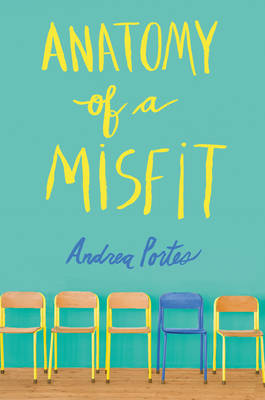Reviewed by Amber (The Literary Phoenix) on
I believe people with influence have the responsibility to encourage a community of respect. If this was a book about how racist a place can be, how homophobic a place can be, how sexist a place could be... it would be different. There would be a lesson buried. But it isn't.
How does having a character who calls a character "negro", having that POC character steal, and justifying it through having that same racist character say "some stereotypes exist for a reason" add to the story?
How does having one character refer to a mean girl as the c-word add to the story?
How does the slut shaming add to the story? Stealing Vicodin and drugging her boss?
I can keep going. I mean, the main character has a Romanian background, and she disrespects her own culture by calling her father "Count Chocula". Her best friend's mother is moderately religious and is constantly referred to as "totally insane". Every page has something.
Is the author trying to portray that small towns are terrible, inhuman places to live? Okay, well let me tell you about my small town.
My town has 23,000 residents. Lincoln, Nebraska (where Anatomy of a Misfit takes place) has a population of 280,000 residents. So I think I have a better picture of a small town.
Growing up in the 90s, I remember one African-American in my school. We had three Wiccans and two lesbians and one gay that I knew of. Two or three kids of Asian decent. One Indian family, two Greek families. The rest of us? Caucasian as f***. Never ONCE did I witness an incident of racism, sexism, or homophobia among my peers. We loved the variety of religion in our school, having whole days where we'd bring in Tibetan monks (for example) and learn about them.
Does racism, sexism, homophobia, and religious intolerance exist in my community? I'm sure it does! Last year, one of our residents was in the news as a white supremacist. And the community, as a whole, as ashamed. Outraged. Twice as many people showed up to the protests and rallies. He was ostracized.
My point in sharing this is that there is no way this whole town can be a cesspool of intolerance, the way it is described. The author has said that it is a reflection of her childhood. Did she really experience this level of hatred? Or is it a reflection of her own beliefs? I don't even know. But listening to this, at points, made me feel physically ill.
Oh my gosh, let's think of other things that are seriously wrong? Anika doesn't understand the difference between a respectful person and a violent one. Logan is a "bad boy" stereotype. Shelly is a bimbo stereotype. Every character is actually a stereotype. The scene where the family tries to hand out to the POC because they feel bad for her because she's a POC. How the mom marries an "ogre" because she doesn't know better and needs to care for her children.
How the narrator speaks in the worst accents for all the non-white characters.
How the story adds guilt to people in unhealthy relationships. Emotionally abusive relationships are never okay.
I can't get past all this. It could have been a sad, tragic story about a boy in an abusive home, and a devastating ending. That would have been enough. In fact, a kind and loving town doing such a thing would have been a more powerful story. But, instead, Anatomy of a Misfit just teaches its readers that Nebraska is filled with white supremacists and should be burned.
Oh, and apparently it's appropriate to use a memorial service to out a bully and get revenge.
Oh stop. Please stop.
Do stories like this need to be told? Yes! Yes, it needs to be out there so people understand and know the signs and do something before the real world has an ending like this.
But not like this.
Reading updates
- Started reading
- 21 February, 2018: Finished reading
- 21 February, 2018: Reviewed
